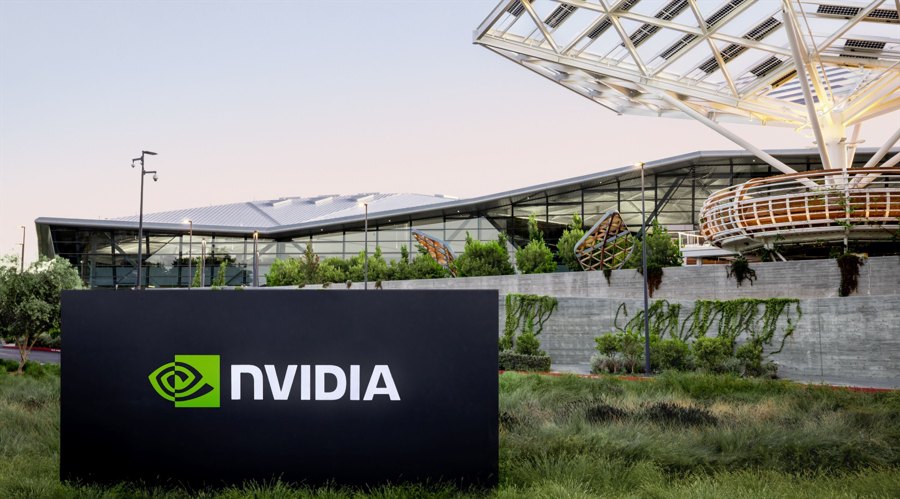Nvidia’s record-breaking Q4 earnings underscore insatiable
appetite for AI, sending ripples through tech markets.
Nvidia’s Financial Fireworks: A Breakdown
Nvidia has once again flexed its silicon muscles, reporting
a jaw-dropping $39.3 billion in revenue for the fourth quarter of fiscal 2025.
That’s a 12% uptick from the previous quarter and a staggering 78% leap from
the same period last year. Net income didn’t lag behind either, swelling to $22.1
billion, an 80% surge year-over-year. For the quarter, GAAP earnings per
diluted share was $0.89, up 14% from the previous quarter and 82% from a year
ago.
NVIDIA $NVDA JUST REPORTED EARNINGSEPS of $6.12 beating expectations of $5.58Revenue of $26B beating expectations of $24.59BNVIDIA ALSO JUST ANNOUNCED A NEW 10:1 STOCK SPLIT pic.twitter.com/6v2yJNa3dM
— Evan (@StockMKTNewz) May 22, 2024
For the full fiscal year 2025, Nvidia’s total revenue skyrocketed to $130.5
billion, marking a 114% increase from the prior year. In the fourth-quarter, data
center revenue—the backbone of Nvidia’s AI expansion—surged to $35.6 billion,
up 16% from the previous quarter and up 93% from a year ago.
This isn’t just a financial win—it’s a market statement. AI is no
longer hype; it’s a money-making machine, and Nvidia is at the center of it
all.
Blackwell Chips: The AI Dynamo
So, what’s fueling this cash bonanza? Enter Blackwell, Nvidia’s latest
AI superchip that’s taking the tech world by storm. CEO Jensen Huang couldn’t
contain his excitement, stating, “Demand for Blackwell is amazing as
reasoning AI adds another scaling law.”
AI isn’t slowing down, and Nvidia has positioned itself as the go-to
supplier for the industry’s most powerful chips. Cloud giants like Microsoft,
Amazon, and Google are all clamoring for more Nvidia hardware to power their AI
ambitions, driving up demand.
The Blackwell
chip represents a major leap in performance, promising faster processing
speeds and greater energy efficiency—a critical factor as companies
increasingly focus on sustainable AI infrastructure. Its efficiency
improvements mean businesses can run larger AI models without racking up
astronomical electricity bills.
AI’s Market Mania
Nvidia’s financial triumph isn’t just a win for the company—it’s a
bellwether for the AI industry’s explosive growth. The insatiable demand for AI
applications—from chatbots writing emails to predictive analytics in finance
and healthcare—means companies are scrambling for Nvidia’s high-powered chips.
AI built for speech is now decoding the language of earthquakes. Using speech recognition AI, scientists are able to decode seismic activity, uncovering patterns that could one day help predict earthquakes. Learn more: https://t.co/d5bDvzWFDl pic.twitter.com/Q3Wtu3Zs9a
— NVIDIA (@nvidia) February 21, 2025
Consider this: Nvidia’s data center revenue, which includes AI chips, rose
142% to $115.2 billion. The market isn’t just growing—it’s evolving at warp
speed.
Investors are watching Nvidia closely as a gauge of AI’s real-world
monetization. If Nvidia’s earnings continue soaring, it’s a sign that AI is far
from a bubble—it’s a megatrend.
Market Reactions: A Mixed Bag
You’d think Wall Street would be popping champagne over these numbers,
but the reaction has been more cautious than euphoric. Nvidia’s shares dipped 1%
post-announcement, only
to rebound by 3.7% later.
So, why the hesitation?
- Overheating Market Concerns – Some analysts worry Nvidia is becoming too
dominant, too fast, creating long-term sustainability questions. - Supply Chain Risks – The AI chip industry faces geopolitical risks,
including export restrictions and supply bottlenecks that could limit Nvidia’s
ability to meet demand. - Competition Heating Up – Rivals like AMD and Intel are ramping up
efforts to compete in AI chip dominance, while China’s DeepSeek is developing
cost-effective alternatives.
“Demand for their products looks to be extremely strong, and that’s really going to be the key for $NVDA going forward.” Benchmark Company managing director Cody Acree says on Nvidia’s Q4 earnings report. pic.twitter.com/hLhxqpyCOM
— Yahoo Finance (@YahooFinance) February 26, 2025
That said, Nvidia’s guidance for the next quarter—projecting
$43 billion in revenue—suggests they see no slowdown in AI demand anytime
soon.
The Road Ahead: Opportunities and Speed Bumps
While Nvidia is riding high on AI’s momentum, it’s not all smooth
sailing. Potential challenges loom, including:
- Geopolitical Tensions: With AI chips now at the center of US-China
trade tensions, Nvidia’s ability to sell to overseas markets remains uncertain.
The Biden administration has already placed restrictions
on high-performance AI chip exports to China, a move that could cut off
billions in revenue. - Market Saturation: As more companies enter the AI race, demand may
eventually stabilize or even decline, impacting Nvidia’s exponential growth
trajectory. - R&D and Innovation Pressure: With competitors like AMD’s MI300
series and Google’s TPUs catching up, Nvidia will need to continuously innovate
to maintain its competitive edge.
Betting on the AI Boom
Nvidia’s record-breaking earnings aren’t just about one company—they underscore
a seismic shift in how AI is shaping the economy.
As industries from healthcare to gaming, finance to self-driving cars
integrate AI into their operations, demand for Nvidia’s cutting-edge chips will
only grow. The real question isn’t whether Nvidia will thrive—it’s how much
further AI can push the limits of computing.
For investors and tech enthusiasts alike, watching
Nvidia means watching the pulse of the AI revolution.
For more stories of innovation, visit our fintech section.
This article was written by Louis Parks at www.financemagnates.com.
Source link



